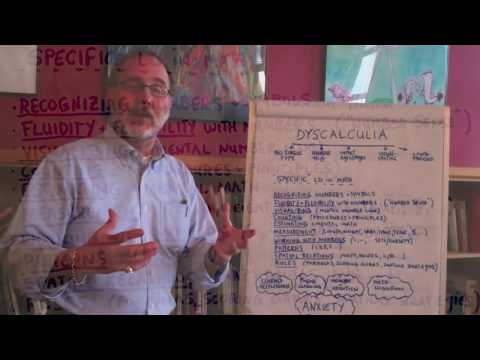
Dr. Sheldon Horowitz of the National Center for Learning Disabilities speaks about the disability of dyscalculia. He explains that there is no single type of this disability, which means that it will present in people in a variety of different ways. The impact of dyscalculia also differs, depending on stages of learning and age.
To the surprise of many, the numbers themselves are not always the entire problem when addressing dyscalculia. According to Horowitz, a spatial and visual component also exists with this issue. Additionally, Dr. Horowitz underscores that language processing issues also play a significant role in the ability to process mathematical and numerical information.
Key Takeaways:
1
The National Center for Learning Disabilities stresses that dyscalculia, also called math dyslexia, can affect people differently at different stages of their life.
2
There is no single type of dyscalculia, its definition varies, because it affects people differently.
3
Dyscalculia is difficulty visualizing and recognizing numbers, and it makes one struggle with counting, estimating, measurements, and patterns.
Do You Need help with a Dyscalculia Difficulty?
Our simple online analysis will help you get to the core of the problem and find the right solution for you.
Understanding how to help someone with a learning difficulty starts with understanding which micro-skills are affected. When you learn which of the micro-skills is the problem, you will then be on your way to solving it.
You'll also learn how to:
- Build confidence
- Enhance Learning ability
- Eliminate avoidance
- Build grit
You can get this analysis for free by filling out this simple form. This will help you get to the bottom of a learning difficulty and provide you with a solution. If you are ready to put this problem behind you click the button below and fill out the form.










